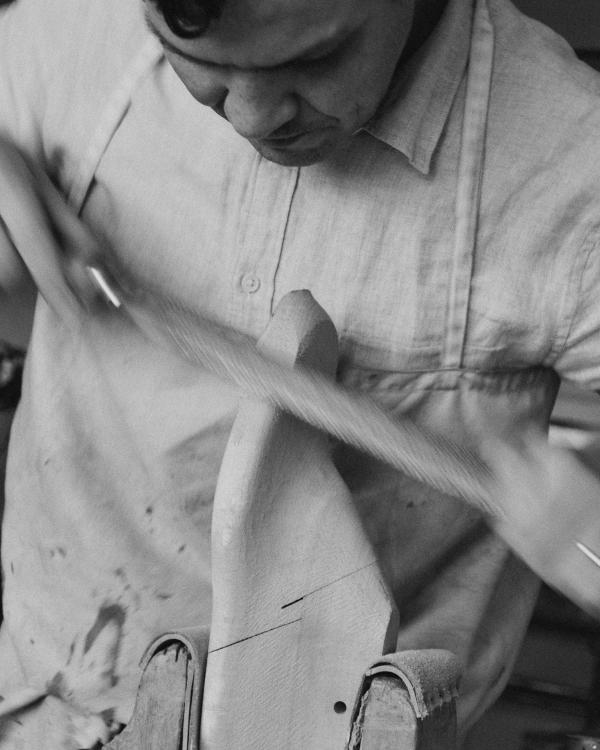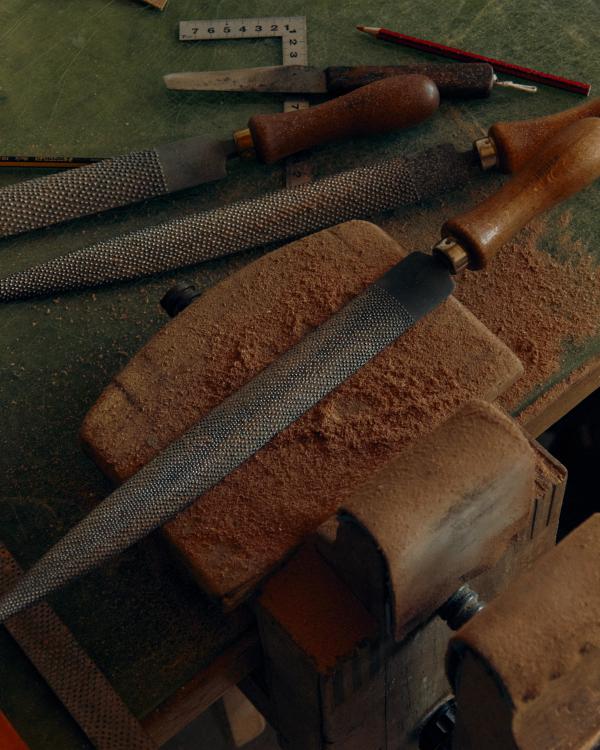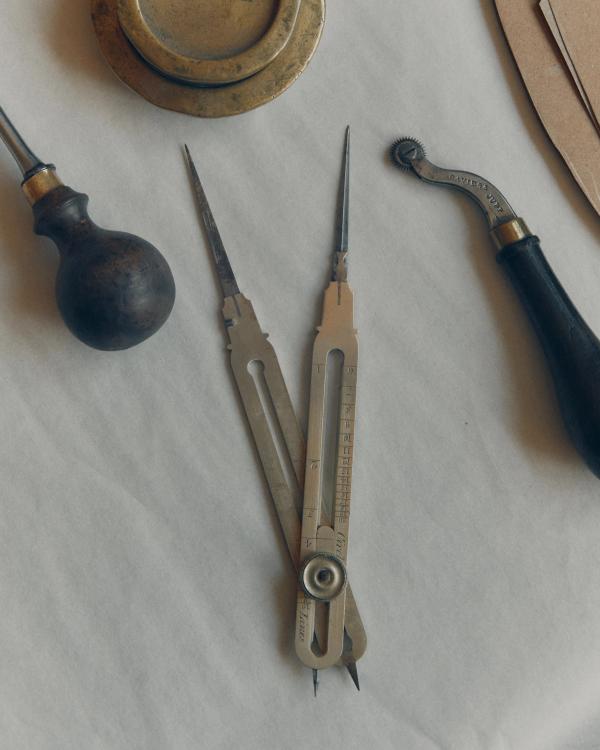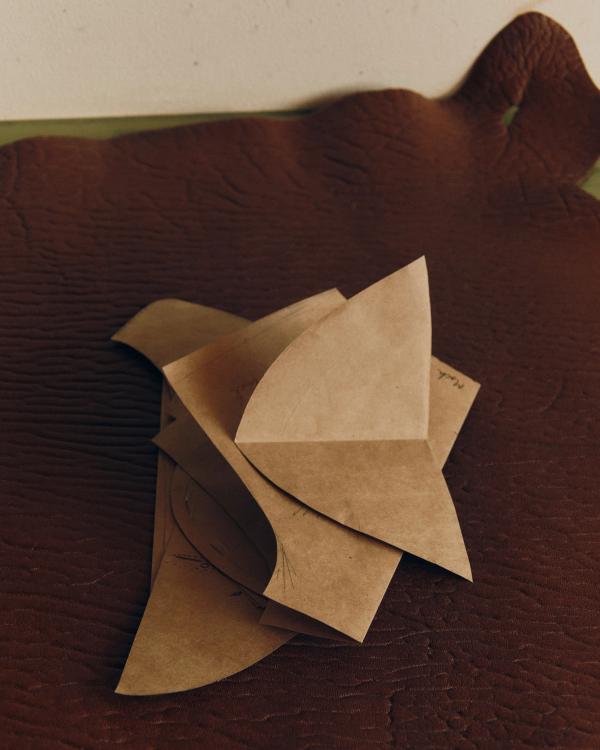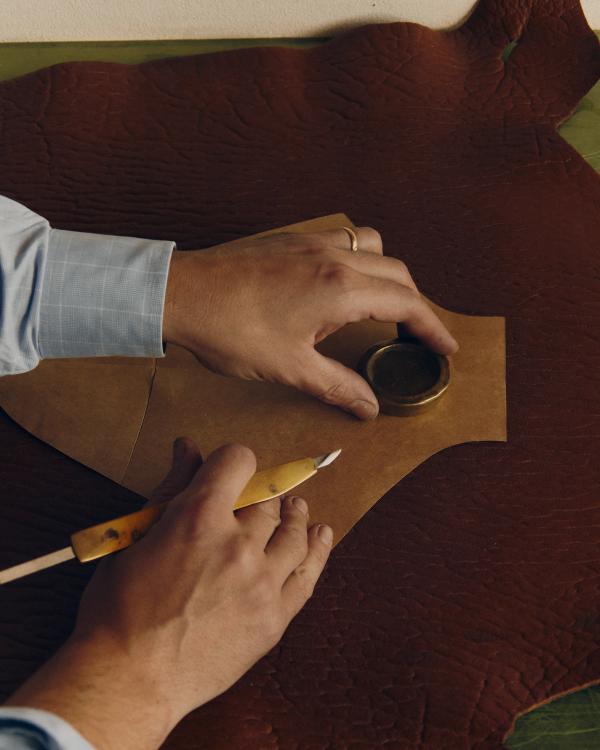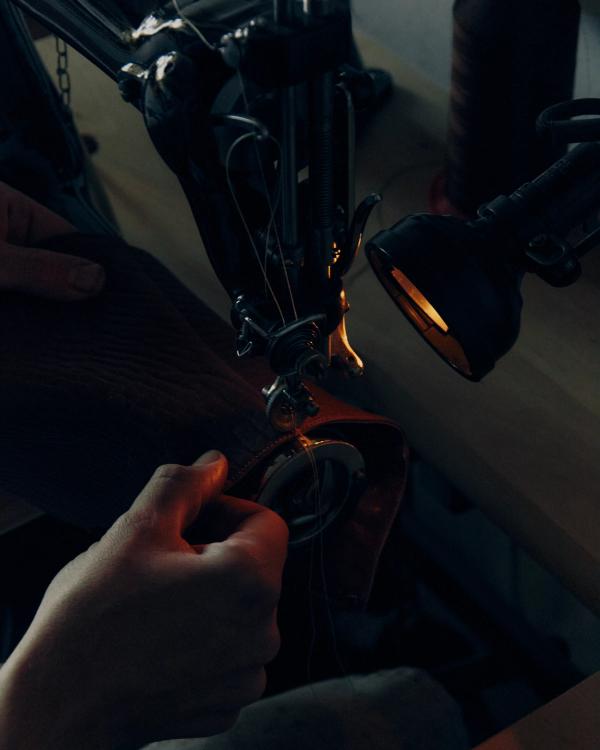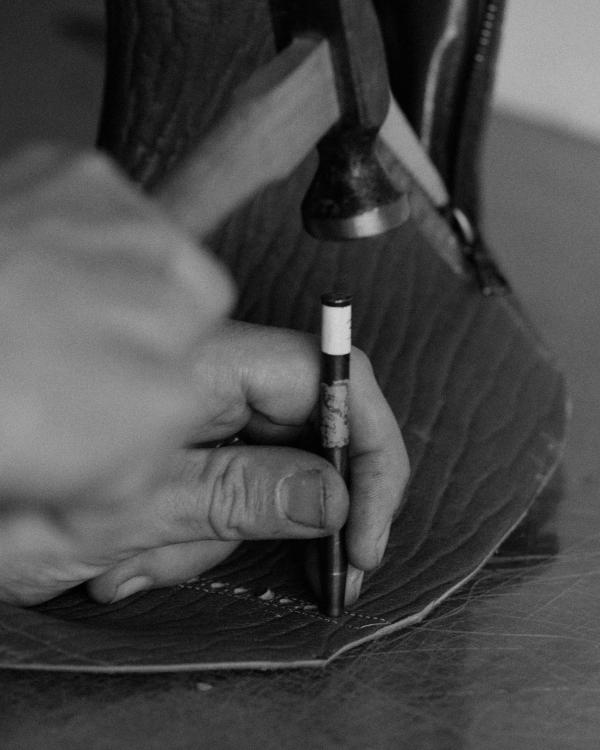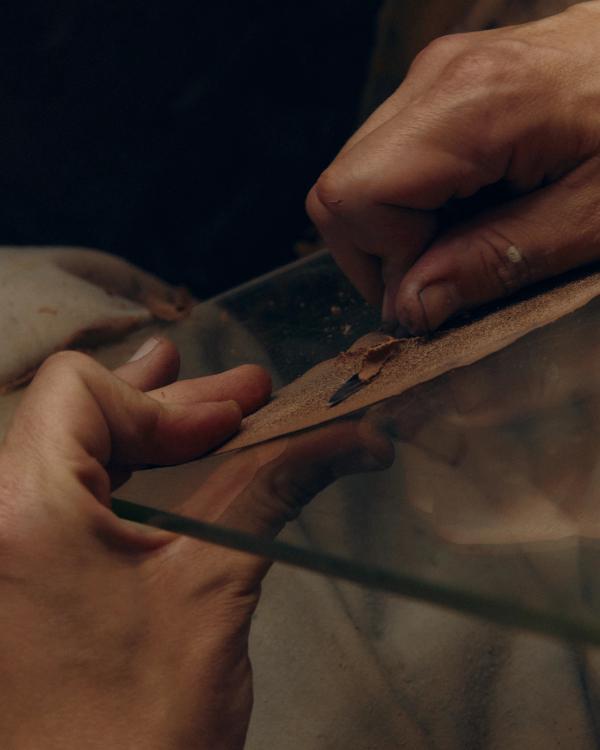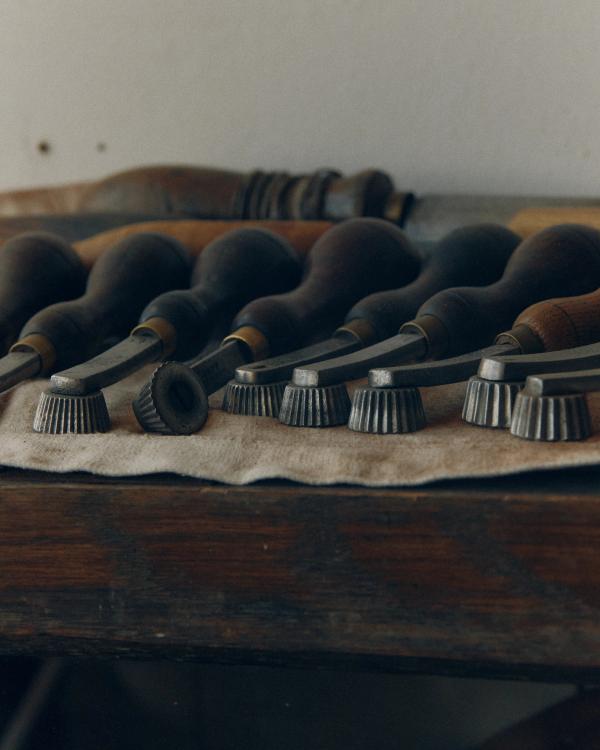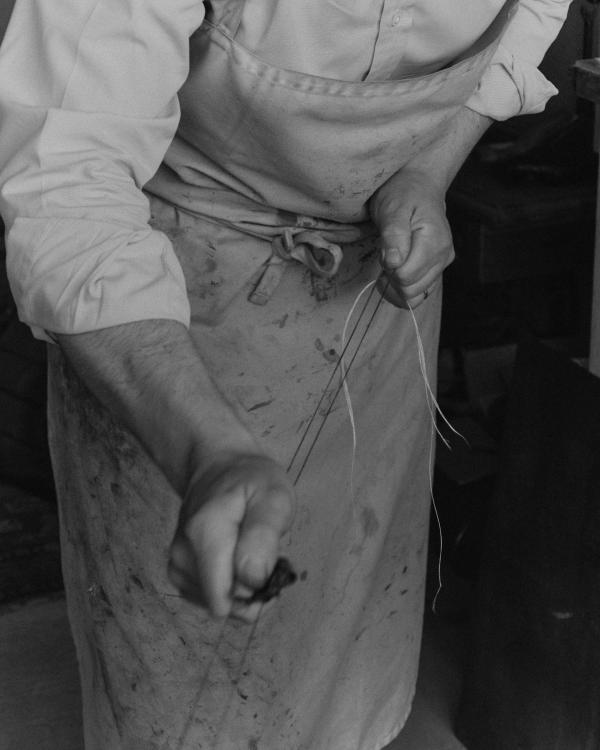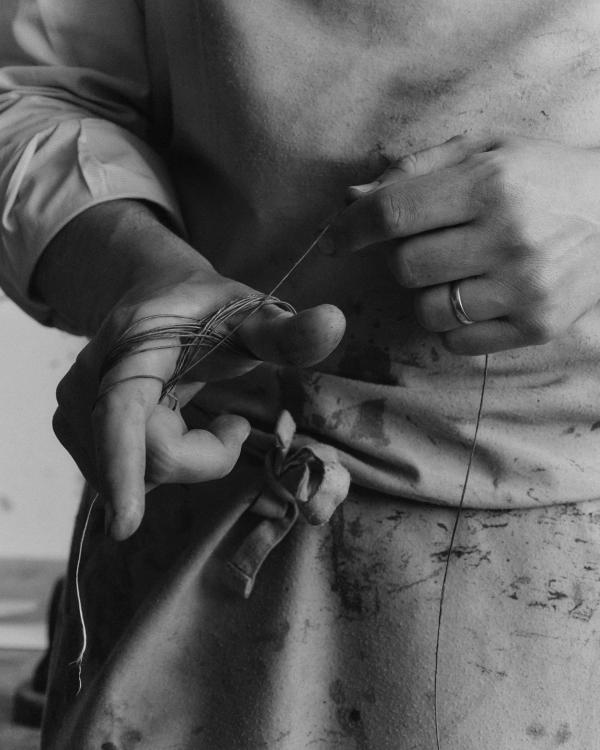
The process of making bespoke shoes will first require our appointment. We will discuss the requirements of your shoes, consider last shape, choice of leather and details. I will take a draft of your feet using a few simple instruments and a pair of wooden lasts will be hand carved from the information gathered. Once the lasts are complete, now a paper pattern specific to the proportions of your lasts will be produced.
A trial shoe will be prepared to assess the volume and fit, but also confirming that the design of the shoe meets your expectations. With confirmation of these different aspects, we will decide together upon a second fitting or a move to the final make. Using oak bark tanned leathers, the finest box calf, Morocco or vegetable tanned leather, I will begin to make your shoes.
The flax threads, waxes, stain of your heel and solution to finish your soles are all made in house. Everything carved, drawn, cut, sewn, brewed and burnished in the same place. The final finish ensured by tools now serving their fifth generation of shoemakers, made by craftsmen in London over a century ago. Finally, hinged and hollowed shoe trees will be made specific to each pair, ensuring they retain shape for years to come. We make slippers, shoes and boots in the traditional method for both men and women.
All shoes are supplied with fully lasted shoe trees; boots supplied with three piece boot trees.
Timings
The process of making hand-sewn shoes is a time intensive work, a first pair requiring around 8–10 months for delivery. Subsequent pairs can be produced
on a shorter time frame.
Pricing
Pumps & Slippers, from £4,700
Leather Shoes, from £4,700
Ankle Boots, from £5,300
Crocodile and Alligator shoes, from £7,000
Wellingtons, Long Boots and Riding Boots, Price on request
Prices are exclusive of VAT.
